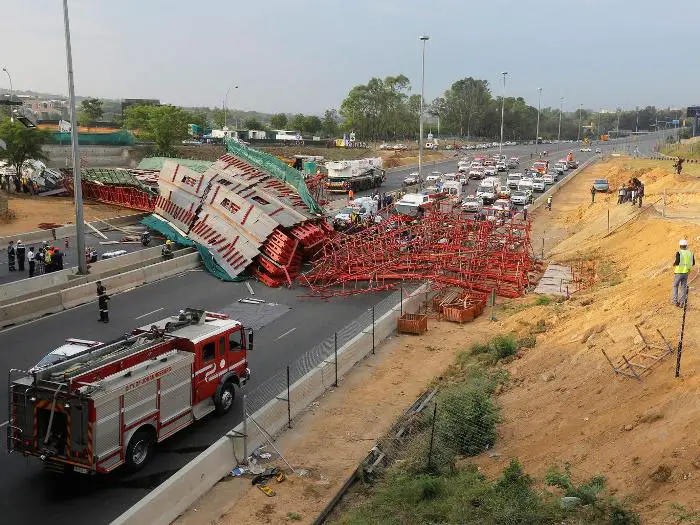- Firm mounts legal defense as it seeks to distance itself from the bridge accident
- Fresh inquiry by South African Labour Department into the fatal collapse of the bridge in October 2015 underway
- Murray and Roberts is one of the biggest construction firm in South Africa
By Anthony Kiganda
Construction firm Murray & Roberts,the main contractor given the mandate for the construction of a bridge near Grayston Drive in South Africa, has sought to distance itself from a bridge collapse claims in South Africa that claimed the lives of two people and left 19 others injured.
This follows the launch of a fresh inquiry by the South African Labour Department into the fatal collapse of the bridge in October 2015. The scaffolding around the “under-construction” bridge caved in over the M1 highway.
During an inquiry session, the presiding officer, Lennie Samuel however insisted that construction firm Murray & Roberts and scaffolding supplier Form-Scaff, present their statements into the record to capture the dates, times and extent of their involvement in the Grayston project.
“All reports that have been presented to the commission, and statements, is sub judice.”
Form-Scaff has also defended itself stating that the only role it played during the construction of the bridge was only to supply the scaffolding to Murray & Roberts.
“Form-Scaff has no knowledge of the construction methodology that Murray & Roberts used in erecting the temporary works,” Form-Scaff representative Evan Rodulph says.
Murray & Roberts has told the inquiry that it was the scaffolding that collapsed and no part of the permanent structure caved in at any point.
The inquiry subsequently received reports that have raised concerns about possible missing bolts in the scaffolding, and safety concerns.
According to Johannesburg Development Agency’s representative, Willem le Roux, factual errors have been revealed in the submission.
He says witnesses need to clarify claims that bolts were missing from the scaffolding.
Form-Scaff in defence says its surveyors issued warning signs in the days before the collapse.
“The girder batteries might have been misaligned, concerns that the site was not ready to receive all the pre-assemblies as agreed,” representative, Evan Rudolph, says.
Both parties have been given until the close of business on 31 March to hand over their final reports into the collapse.
The department has meanwhile offered not to lift a prohibition notice placed on Murray & Roberts, restricting building at the scene of the fatal bridge collapse, until the cause is found.
Samuel says the department’s immediate priority is to find out exactly what happened.

Leave a Reply